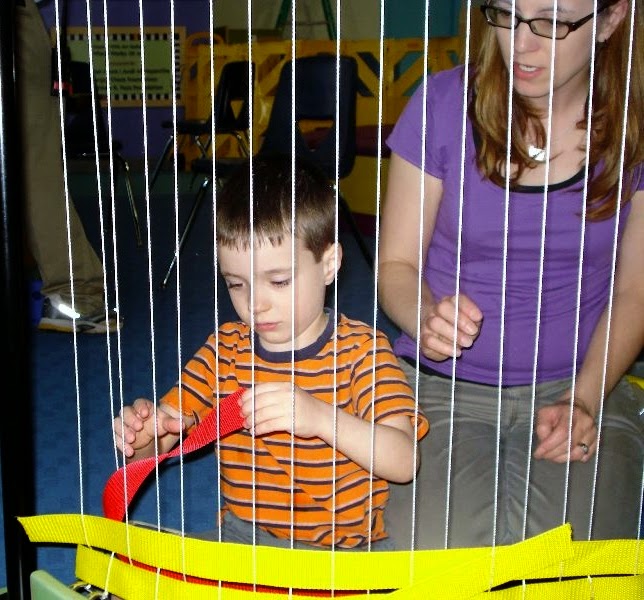Math Connections can be made at home
or at the Museum! Young children who engage in pattern play, mathematical
situations, models of quantitative relationships, and activities that encourage
awareness of change are practicing skills that lend to algebraic
learning.
In this second post in a two-part
blog, we focus on the development of algebraic reasoning. Author, Educator, and
Curriculum Developer Jennifer Taylor-Cox offers insight regarding
the central ideas of algebra and illustrates how they can be applied through
daily experiences.
Central Idea #3: Models of quantitative relationships
"'Explore models of quantitative relationships in a
real-life context"
Throughout Math Connections, children can push individual or
sets of beads or manipulatives together to represent different values.
Try this: As you play with manipulatives, narrate the child's
actions. You might say, You pushed 5 red beads and 2 white beads; that's 7
beads! Ask questions like, What other ways can you make 7?
Think about this: What
kind of items can you use at home to emphasize quantitative relationships?
Collect 5 cereal pieces in one bowl and 2 crackers in another; that equals 7!
Use snacks to determine other ways to get to 7.
Central Idea #4: Change
"'The understanding that most things change over time,
that such changes can be described mathematically, and that changes are
predictable'"
In Math Connections, children can explore change related to size,
shape, and measurement.
Try this: Encourage
children to use words like bigger/smaller, shorter/taller to
describe objects, structures, or creations. You might ask, How
many blocks tall is your tower?
Think about this: How
can you incorporate math words into your daily routine? When driving and
observing you might ask, Which building is taller? How long do you
think it will take us to get to the store?
While at home or during your next visit, facilitate play and
learning by engaging in these challenges! What a fun way to lay the groundwork
for future mathematics learning!











